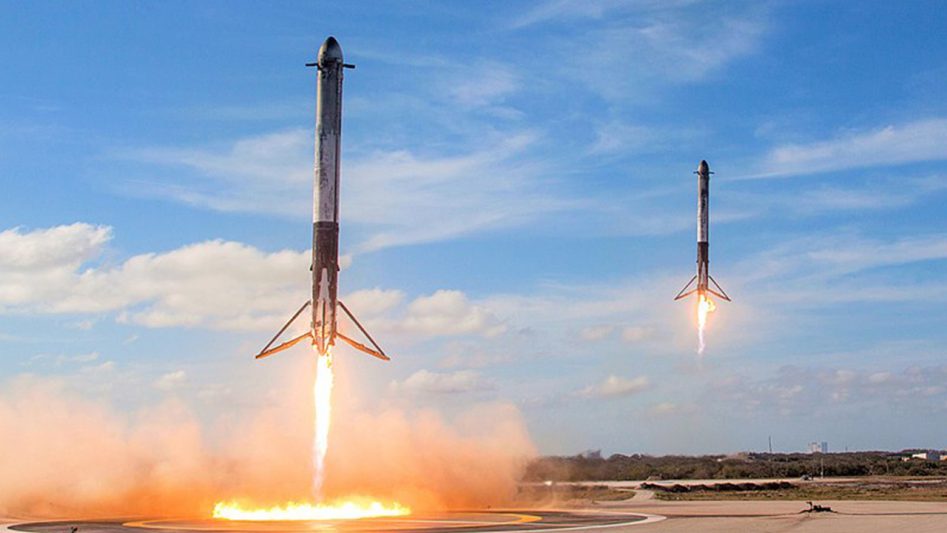It is the business of industry to boost its speed. Build the rockets cheaper, launch the vehicles faster, and recover them better. Nevertheless, speed comes at a price, the faster you travel the more difficult it is to stop and the steeper the cost. In only two years SpaceX has disrupted the launch business by dispelling the conception that orbital rockets can only be expendable, but this comes at a cost. Aerospace experts peg the vehicles at ten per cent heavier than an equivalent expendable booster. This equation can only get more complicated as newer vehicles are expected to be fully reusable. Competitors like Blue Origin, Arianespace, and even China have announced their intention to enter the market. In order to stay competitive builders will have to extract every pound of performance from the rocket that they can possibly achieve.
It is not my intention to reduce the accomplishments of SpaceX and Blue Origin over the last two years. Landing is challenging. Following launch, the Falcon booster accelerates to Mach 10 before staging at about 200,000 feet. This is still far below the 300,000ft altitude of space. After climbing further to dissipate energy, the first stage turns around with the thrust of cold gas to begin descent. After entering the denser atmosphere, the rocket engines restart again to slow down and the rocket structure endures extreme heating. In the last twenty miles, the booster deploys grid fins to steer towards the landing platform. Then in the final ten seconds, one engine is relit for landing and about two tons of landing gear is dispatched.
It only gets more difficult after that. Satellites and the second stages that carry them achieve speeds of Mach 22 to reach orbit. Kinetic energy increases at the square of velocity, and that equates to about five times the energy of a first stage at peak velocity.
Past spacecraft have applied heavy heat shields and fuel to the problem of slowing down. The retired Space Shuttle used five tons of thermal tiles and 23 tons of fuel to maneuver and deorbit. Experts have speculated that the Falcon 9 second stage could need a 3,600-pound heat shield to tolerate reentry and an additional 2,000-pounds of fuel.
Translating that into costs. The listing price for the Falcon 9 is $57 million dollars. That equates to $2,500 per pound and $14 million for the landing mass. The real figure is surely higher. We are only computing the payload cost, and this is still excludes the actual cost of the hardware.
One potential avenue for reducing this cost is the electrodynamic tether. The tether is built of a conducting wire that is pulled along by the spacecraft in the Earth’s ionosphere. The ionosphere induces a magnetic dynamo in the wire and an ample amount of power. Back in 1995, the Space Shuttle Columbia transported a tether to orbit and produced over 3,500 watts of power before the test broke down. Dynamos can be manipulated to produce thrust and even drag. The wires have been subsequently flown on satellites as a cheap method for deorbiting the spacecraft in weeks. The devices only consume about 5% of the payload mass or 400 pounds for an 8800 pound depleted second stage. That equates to a payload cost of a million dollars. This is still half the 10% payload cost of a rocket, excluding the hardware expense.
You still need to land the vehicle at the end of the day, and using conventional transportation that is no big deal: until you have to return from space. To place this in perspective, the Falcon 9 first stage weighs about 54 metric tonnes at staging. It original weighed about 400 tonnes at launch with 23 tonnes remaining as empty mass. That leaves 31 tonnes of propellant for landing. You also lose 2 tonnes of empty mass for the landing gear. Assuming that you could directly upgrade the second stage for reuse, you could reasonably expect to burn about 4900 pounds of fuel to brake to zero. Then there is the landing gear, and that could easily weigh 1000 pounds. That adds up to an amazing $14,750,000 payload penalty. This figure is again only the payload penalty. We are excluding the real cost of the hardware.
One option for reducing this penalty is magnetic levitation technology. While the proposal is decades old, the technique has never been successfully implemented for a variety of reasons. The energy expenditures for accelerating a satellite to Mach 22 are vast. Then there is the problem of orbit insertion. Rockets are very effective at adjusting thrust to place satellites into circular orbits, but maglevs like guns are coarse aiming devices. Gravity and drag will pull the spacecraft down immediately. This could be sidestepped in theory by reversing the system to decelerate vehicles instead. The energy expenditures are dramatically reduced, and with that the hardware requirements. It is entirely plausible that a maglev system could be constructed using commercially available high-strength magnets. Then only a modest deceleration would be needed to realize significant payload savings.
The competition for cheap access to space is only expected to heat up in the next decade. To stay competitive manufacturers will have to extract every pound of performance from their boosters.



Comments
I’m the author of the ‘The Physics of SpaceX’ post you reference in the text. While I stand by my estimates, and I’m very flattered that you cite me as a source, I should point out that I am in no way an expert on spaceflight matters. I don’t work in the spaceflight industry in any capacity, and I’m merely an interested observer, and blogger, with a physics degree.